When a new project is open in DReW Seismic, a window as that shown in the following appears.
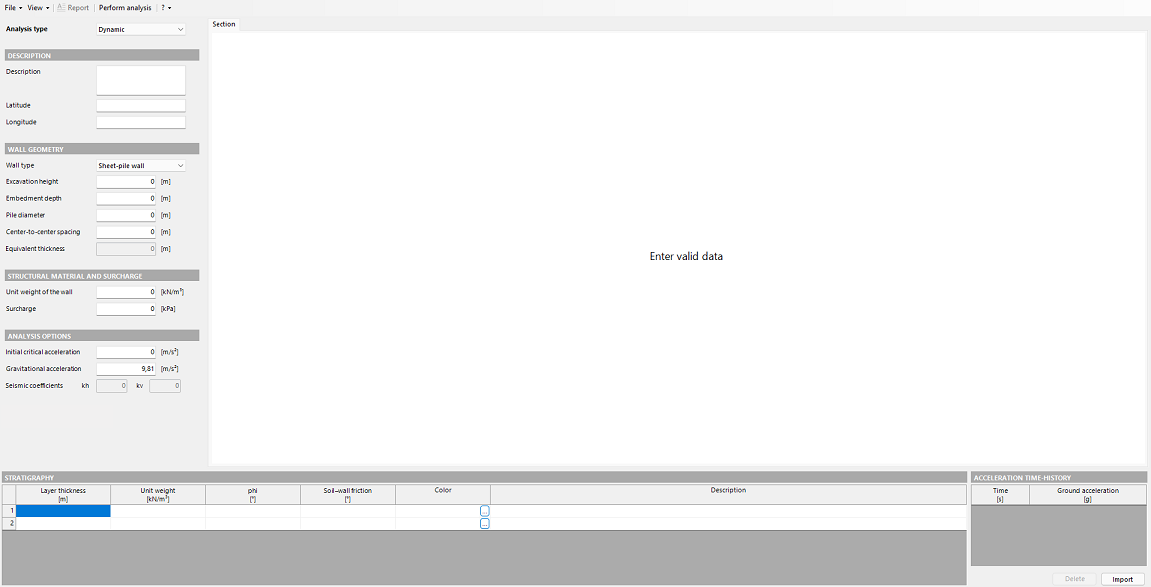
New project window in DReW Seismic
As shown from the above figure, the following fields are required in the input section:
•Analysis type
•Description
•Wall geometry
•Structural material and surcharge
•Analysis options
•Stratigraphy
•Acceleration time-history
ANALYSIS TYPE
Two different types of analysis are possible in DReW Seismic: these are "Dynamic" and "Pseudostatic".

Analysis type
The default option for analysis type is Dynamic.
DESCRIPTION
General information about the project could be added in this section.
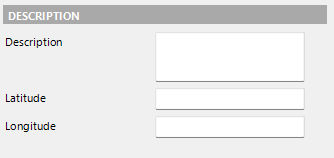
Description
WALL GEOMETRY
The typology of the wall (diaphragm wall or sheet-pile wall) and the concerning dimensions are chosen in this section.
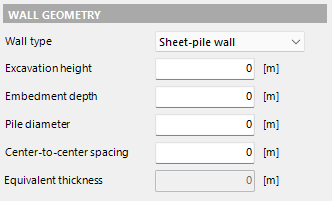
Wall geometry
STRUCTURAL MATERIAL AND SURCHARGE
This section allows choosing the unit weight of the material that the wall is made up of, along with the surcharge acting on the retained side.

Structural material and surcharge
ANALYSIS OPTIONS
This section appears differently on the basis of the chosen analysis type. If a dynamic analysis is performed, the initial critical acceleration and the gravitational acceleration have to be input. The gravitational acceleration is set by default at 9.81 m/s2. The initial critical acceleration has to be chosen by the user. This data has to be set to 0 for a retaining wall of new construction. On the contrary, it has to be taken equal to the maximum acceleration that acted on the retaining wall during the previous earthquakes hitting the structure. However, lacking more accurate information, the assumption of the value 0 also for existing structures leads to precautionary results. Indeed, the greater the initial critical acceleration, the smaller the earthquake induced permanent displacement.
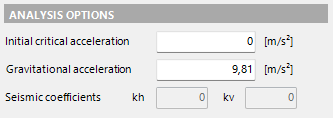
Analysis options for dynamic calculation
On the contrary, only the horizontal and vertical seismic coefficient, kh and kv, are required when a pseudostatic analysis is performed.
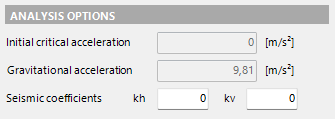
Analysis options for pseudostatic calculation
STRATIGRAPHY
Information about the soil layers is input in this section. Two layers are allowed in this version of DReW Seismic, with the interface between them at the depth of the excavation level. The thickness of the layers is automatically taken by DReW Seismic on the basis of the excavation height and embedment depth. The other parameters required for the two layers are:
•Soil unit weight, γ1 and γ2
•Angle of shearing resistance of the involved soils, φ1 and φ2
•Friction angle at the soil-wall interface, δ1 and δ2
A color for the graphic representation and a description may be included as well.

Stratigraphy
ACCELERATION TIME-HISTORY
In order to perform a dynamic analysis, an acceleration time-history has to be applied to the soil to predict the earthquake-induced displacement of the wall. To this purpose, it is possible to refer to an acceleration time history that has been previously recorded at the site. A database of earthquakes to refer to is available on this website.

Acceleration time-history